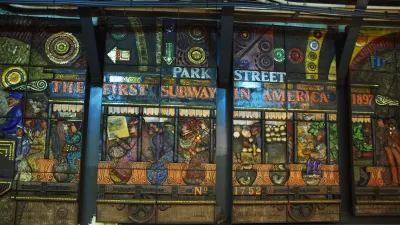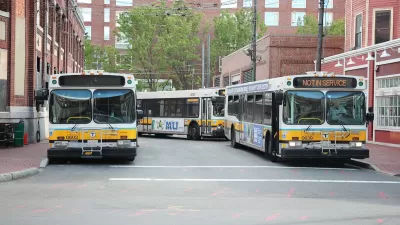A study from MIT seems to confirm that the cost of transit is depressing use of service by low-income residents, and that reduced fares help this population take the trips they currently don’t.

A randomized trial of Boston commuters showed that low-income transit users are more likely to use transit when they received a discount. The study separated a group of transit users into a group that got a discount and one that didn’t. “Unsurprisingly, people who paid half price for transit fares used transit more often: the group that received the discounted CharlieCard took, on average, about 30% more trips per week than the control group paying full price,” Christian MilNeil writes for Streetsblog Massachusetts. The findings suggest that ridership by low-income transit riders is suppressed by the cost of using services.
Interestingly, the ridership habits of the subsidized groups varied somewhat from those of other riders. "While transit agencies might be concerned that offering a discounted fare to lower-income riders might increase crowding, the study’s data show that lower-income households (with and without the discount) were actually more likely to ride during off-peak times, especially in the early-morning hours before 7 a.m.," Milneil writes. The study's authors think if the agency were to subsidize low-income riders, most of the ridership gain would be on buses and trains that currently have capacity.
FULL STORY: MIT Study: High Fares Limit Low-Income Households’ Mobility

Alabama: Trump Terminates Settlements for Black Communities Harmed By Raw Sewage
Trump deemed the landmark civil rights agreement “illegal DEI and environmental justice policy.”

Planetizen Federal Action Tracker
A weekly monitor of how Trump’s orders and actions are impacting planners and planning in America.

The 120 Year Old Tiny Home Villages That Sheltered San Francisco’s Earthquake Refugees
More than a century ago, San Francisco mobilized to house thousands of residents displaced by the 1906 earthquake. Could their strategy offer a model for the present?

In Both Crashes and Crime, Public Transportation is Far Safer than Driving
Contrary to popular assumptions, public transportation has far lower crash and crime rates than automobile travel. For safer communities, improve and encourage transit travel.

Report: Zoning Reforms Should Complement Nashville’s Ambitious Transit Plan
Without reform, restrictive zoning codes will limit the impact of the city’s planned transit expansion and could exclude some of the residents who depend on transit the most.

Judge Orders Release of Frozen IRA, IIJA Funding
The decision is a victory for environmental groups who charged that freezing funds for critical infrastructure and disaster response programs caused “real and irreparable harm” to communities.
Urban Design for Planners 1: Software Tools
This six-course series explores essential urban design concepts using open source software and equips planners with the tools they need to participate fully in the urban design process.
Planning for Universal Design
Learn the tools for implementing Universal Design in planning regulations.
Clanton & Associates, Inc.
Jessamine County Fiscal Court
Institute for Housing and Urban Development Studies (IHS)
City of Grandview
Harvard GSD Executive Education
Toledo-Lucas County Plan Commissions
Salt Lake City
NYU Wagner Graduate School of Public Service





























